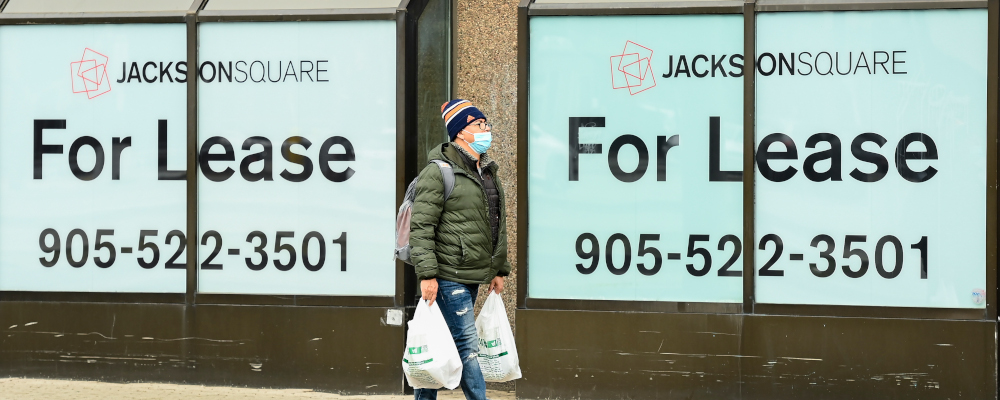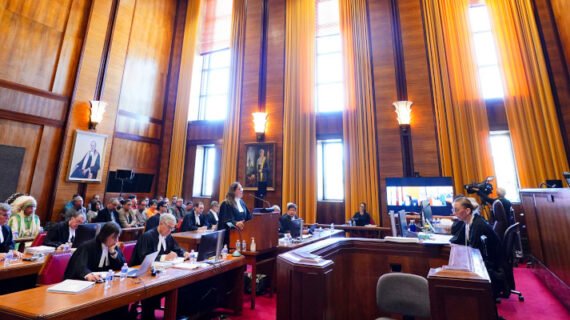The pandemic was officially declared over by the World Health Organization on May 5, 2023. It was realistically over in Canada long before then. Yet our downtowns are still dead. Storefronts are shuttered. Streets are empty. Public transit systems are starved for fare revenue. Street crime is up. People feel unsafe. This isn’t good and everyone knows it.
The damage being done to our cities by continuing the work-from-home regime when it’s no longer necessary is real. It’s long past time for businesses and governments to bring their workers back to the office and inject our downtowns with their vital lifeblood–office workers. It’s time to get back to the office. Five days a week.
The tragedy of the commons
What we’re confronting is a variation of an economic theory called the tragedy of the commons. It posits that an individual or business will exploit a public or common resource to his or her advantage but to the detriment of wider society. Think of overfishing or overlogging. Hence the need for government regulation to manage that resource to avoid depletion for everyone’s benefit.
What we face now is something similar. Fearing a loss of employees to competitors and recruitment difficulties, each single business in isolation has a strong disincentive to be the first to bring workers back to the office full-time. Each business is making a perfectly rational decision based on self-interest. Yet when those individual decisions are aggregated across the economy, they end up damaging the collective social body in the form of a vibrant and prosperous city life.
The highest profile example is San Francisco. Some have declared that once hip city as a no-go zone. Others say it’s in a death spiral. Empty offices, vacant storefronts, and dead neighbourhoods lead to rampant crime, which leads to more empty buildings—all a negative, self-reinforcing feedback loop. We know that busy, people-filled streets, shops, and offices create healthy urban ecosystems. Everyone benefits.
Waffling and indecision by employers
Over the past three years, I’ve sat on two executive teams at large entities that sincerely struggled with this issue amid serious discussions and meetings. The hybrid work model is not conducive to loyalty, teamwork, mentoring, efficiency, and the many intangibles that make a company tick. Outweighing this was the fear of employees quitting in a tight labour market and handicapped recruitment. Possible cost savings from a smaller office footprint also played a role. Studies of worker productivity cut both ways. Everyone has their own opinions and observations on this issue but they’re focused on their own workplaces, not the larger citywide impacts.
“Society isn’t back together enough,” RBC CEO David McKay said recently. “All CEOs in every sector I talk to are struggling with a balance of developing talent, promoting talent, building culture, creating productivity. It’s tough, we don’t have the final model yet.”
The longer the Covid lockdowns went on and as government and business leaders wavered on returning to the office, employees became more entrenched and entitled, to the point where some now refuse to even countenance returning to the office, something they did every weekday just a few years ago. Some thought the much-predicted recession would tilt bargaining power back in favour of the employer, but a recession doesn’t seem to be happening just yet.
Private gain, public loss
Love it or hate it, workers commuting to the office is a large and healthy component of a vibrant city life and our social fabric. In short, our downtowns depend on it. It’s difficult to assess but much has been lost. Society simply cannot jettison a century of established work arrangements, people movement, consumption habits, and city building, all based on five days of commuting, in a one-week period in mid-March 2020 when COVID-19 exploded and forced everyone home. We cannot re-engineer our city life that fast.
Downtown office vacancy rates in Canada are hitting highs not seen in decades. Suggestions to convert office space to housing to rescue our downtowns are hopelessly naive and pie-in-the-sky woolly thinking. Even if everyone agreed and started on it today, it would take many years to see the benefits.
Want better financed public transit? Bring workers back to the office full-time. In Toronto, ridership on public transit remains at 70 percent of pre-pandemic levels. As a result, the Toronto Transit Commission projects a $366 million budget shortfall for 2023. To save money, it cut service to the detriment of those who actually do use the system. In other words, we can inject over a third of a billion dollars annually back into Toronto’s money-starved public transit system by having workers back in the office full-time. The story is similar in Montreal.
Despite this, Toronto’s municipal government still has a hybrid work policy that requires only two to three days per week in the office. If Toronto’s leaders were tough-minded about the plight of their city and transit funding, they would be bold and bring their own employees back five days a week.
Want to help small businesses? Bring workers back to the office full-time. There’s no need for statistics here. Just walk along the streets and look at the boarded-up businesses and For Lease signs.
Want to promote industrial equality? Bring workers back to the office full-time. Factory and warehouse workers, nurses, teachers, miners, loggers, custodians, police officers, and road crews can’t work from home. Just like containing the pandemic, everyone needs to play their part in helping our cities recover from it.

It’s time for leadership
It’s past time for government leaders and CEOs to show leadership for the common good.
The federal, provincial, and municipal governments should bring their employees back to the office for the full week. Businesses should too. If every business in the industry does it, there’s no competitive loss in terms of recruitment and retention.
All governments bear a special leadership obligation here. Their employees constitute huge swaths of downtown workforces. The federal public service now totals over 357,000 employees. Provincial ministries and agencies in Ontario employ roughly 86,000. Granted, not all public servants work downtown but those who do are much-needed transit riders and lunchtime shoppers.
The federal government should explore how it can pressure federally regulated industries such as banks, among the biggest tenants and employers in our downtown cores, to bring their workers back full-time. Provinces and municipalities can think of how they might do the same in their areas of responsibility. Governments can act not only as employers and regulators, but they should also determine how they can, within constitutional bounds, leverage their roles as funders and customers to incentivize the repopulation of the downtown offices of their suppliers and recipients of their largesse. Want that big government contract? Well, what’s your plan to bring your workers back?
Undoubtedly, some employees will grouse, some may quit, and some will withdraw their job applications. Business operations may be impacted in the short term. Everyone will need to respond and adjust. Eventually and perhaps sooner than people think, a new normal will be found and everyone will benefit.
COVID-19 is over but our downtowns are still sick with it. We need to go back to the office. Take a cue from The Beatles. Get back to where you once belonged.




